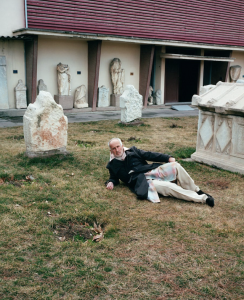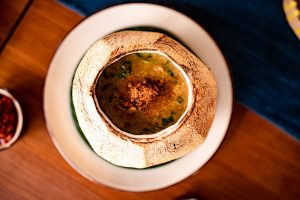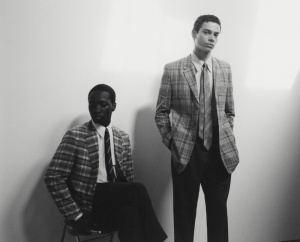Katie Chung, creative director of MCM, discusses her creative approach and culinary preference
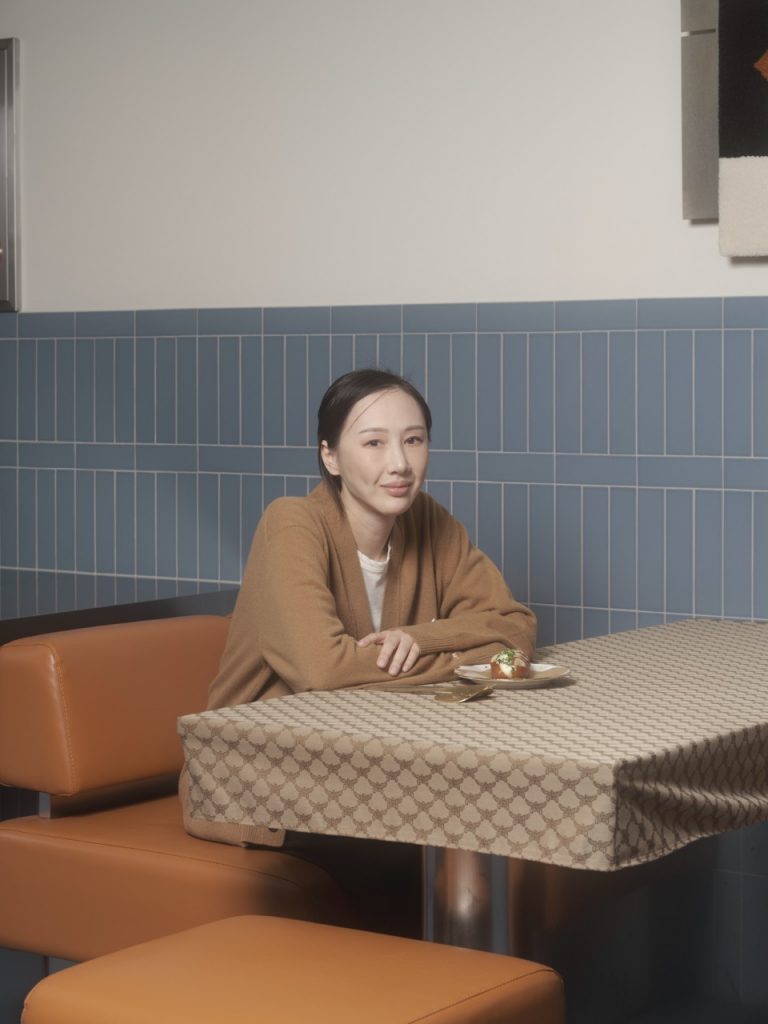
In Katie Chung’s favourite restaurant, the walls are lined with vinyl LPs. The health-conscious creative director of MCM doesn’t indulge in much, but at Buto – a European-Korean fusion restaurant and Hansik bar in Seoul’s Yongsan District – she’ll treat herself to a fried delight: a hot, fragrant order of Eggplant Menbosha. “Unlike other restaurants, they wrap shrimp into eggplant instead of bread, and colour it with squid ink,” she tells me. “There’s this vintage, classic ambiance where, regardless of where I sit, I feel a real sense of comfort during the meal.”
A Central Saint Martins graduate, Chung started designing for her mother’s label Wooyoungmi: “I naturally assumed I had to pursue this path from a young age.” She doesn’t see this as a “particularly glamorous starting point” (though it arguably is) but rather “one that felt natural and familiar”. Now at MCM, she likens her career to that of a musician. “I always think of brand directing as akin to conducting an orchestra. Just as each orchestra varies in size, instruments, and the people performing, directing a fashion brand entails a great deal of understanding and adapting to unique circumstances and requirements.” Her approach is “not about rigidly adhering to my own methods or style, but rather comprehending the working methods involved in conceptualising each brand’s core products, and suggesting areas for change.”
Having lived in both London and Paris before settling in Seoul, Chung feels that certain localities have had their time in the sun as cultural and artistic hubs. “What I’ve come to realise is that there are cities capable of exerting significant cultural influence on the world, during their own eras.” In years past, she says, “cities like London, Tokyo, Antwerp and New York had periods of prominence for creatives”. But times change. “Personally, I feel that Seoul is experiencing such a period now.”
The city’s vibrant food culture is just one indicator of sound cultural health, and Seoul’s is particularly compelling. While she aims to prioritise low-sugar, high-protein foods overall, Chung’s policy is to – at a minimum – sample everything. “When something new is launched, I’m inclined to give it a try out of curiosity, at least once. Myself included, Koreans often enjoy dining at casual eateries like chimaek,” she says, referring to the heavenly pairing of fried chicken and beer served in the evening by many South Korean restaurants, as well as a few specialty chains, some of which have made their way across the world. But the company is often the best part: “I love to get together with friends or family to indulge in those experiences. It’s important to have unique spaces for people to socialise over food,” she adds, “and shared moments”.
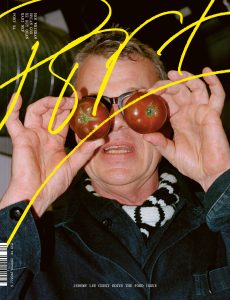
This article is taken from Port issue 34. To continue reading, buy the issue or subscribe here
